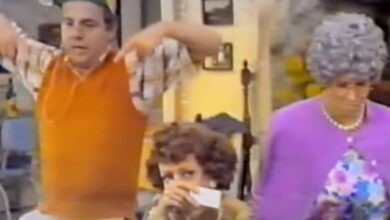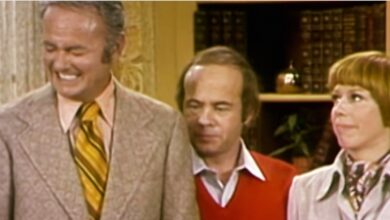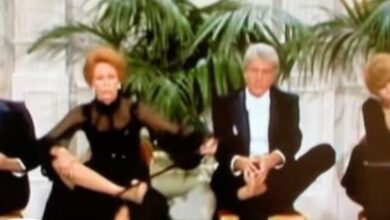Crystal Gayle’s “Don’t It Make My Brown Eyes Blue” Bridges Country and Pop in 1977
In 1977, Crystal Gayle released “Don’t It Make My Brown Eyes Blue,” a song that not only topped the country charts but also made significant inroads into the pop music scene. Its smooth blend of country and pop elements resonated with a wide audience, marking a pivotal moment in Gayle’s career and in the broader landscape of country music.
Born Brenda Gail Webb in Paintsville, Kentucky, Crystal Gayle was the youngest of eight children in a musically inclined family. Her older sister, Loretta Lynn, was already a country music star, and Gayle initially performed in her sister’s shows. However, she carved out her own identity by embracing a more pop-oriented sound, distinguishing herself from Lynn’s traditional country style.
The song was penned by songwriter Richard Leigh, who had previously written hits for Gayle. Inspired during a period of creative stagnation, Leigh presented the song to producer Allen Reynolds, who immediately recognized its potential. Reynolds then introduced the song to Gayle, who was equally enthusiastic about recording it.
Recording took place at Jack’s Tracks studio in Nashville. Due to the regular pianist’s unavailability, Reynolds brought in Hargus “Pig” Robbins, whose distinctive piano riff became a defining feature of the track. Gayle’s vocals were captured in a single take, showcasing her emotive delivery and the song’s poignant lyrics.
Upon its release, “Don’t It Make My Brown Eyes Blue” achieved remarkable success. It reached No. 1 on the Billboard Hot Country Singles chart and peaked at No. 2 on the Billboard Hot 100, remaining there for three weeks. The song also topped charts in Canada and performed well internationally, solidifying Gayle’s status as a crossover artist.
The song’s success had a profound impact on the music industry, demonstrating the commercial viability of country-pop crossover hits. It paved the way for other artists to explore similar musical fusions, contributing to the evolution of country music in the late 20th century.
For Gayle, the song was a career-defining moment. It earned her a Grammy Award for Best Female Country Vocal Performance and opened doors to new audiences and opportunities. The success of the song also led to increased album sales and concert attendance, further establishing her as a prominent figure in the music industry.
“Don’t It Make My Brown Eyes Blue” influenced a generation of artists who sought to blend country and pop elements in their music. Its success demonstrated the potential for genre-blending and inspired musicians to experiment with their sound, leading to a more diverse and inclusive musical landscape.
The song has been covered by numerous artists across various genres, including jazz, pop, and international renditions. These covers attest to the song’s universal appeal and its ability to resonate with audiences worldwide, regardless of musical preferences.
At the time of the song’s release, Gayle was transitioning from being known primarily as Loretta Lynn’s sister to establishing her own identity as a solo artist. The success of “Don’t It Make My Brown Eyes Blue” played a crucial role in this transformation, allowing her to step out of her sister’s shadow and into the spotlight.
Decades later, the song remains a staple on radio playlists and continues to be celebrated for its timeless quality. Its enduring popularity underscores its significance in music history and its impact on both country and pop genres.
The track’s innovative blend of musical styles influenced future production techniques and encouraged artists to explore new sonic territories. It contributed to the broader acceptance of genre crossover in the music industry, setting a precedent for future collaborations and stylistic experiments.
In recognition of her contributions to music, Gayle has received numerous accolades, including induction into the Grand Ole Opry and a star on the Hollywood Walk of Fame. These honors reflect her lasting impact on the music world and her role in shaping the direction of country and pop music.
“Don’t It Make My Brown Eyes Blue” stands as a testament to the power of musical innovation and emotional expression. Its success bridged the gap between country and pop, bringing diverse audiences together through a shared appreciation for heartfelt storytelling and melodic craftsmanship.
In summary, Crystal Gayle’s “Don’t It Make My Brown Eyes Blue” not only marked a high point in her career but also left an indelible mark on the music industry. Its blend of genres, emotive performance, and widespread acclaim exemplify the transformative power of music and its ability to transcend boundaries.





